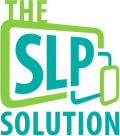Pragmatics and Social Skills Therapy Guides
Step-by-Step plans for a variety of pragmatic and social skills – Plus, wording for your goals!
What is Task Analysis?
Task analysis is the process of breaking a larger skill down into smaller, sequential steps. With each step that the child masters, he grows closer to being able to perform the full skill independently. Tasks analysis is an evidence-based instructional method which has been found especially effective for children who do not respond to regular instruction, which makes it perfect for the children on our case loads.
While the process of task analysis has been studied and backed by research, there aren’t always agreed-upon ways to break down a skill. Every SLP may have a slightly different method of breaking down skills into step-by-step plans. What’s important is that the steps are achievable and sequential so that the child sees incremental success on the way to learning a new skill.
The following therapy guides represent our task analysis for each skill. You’ll also find sample text for your goals.
Looking for Therapy Activities? Worksheets? Troubleshooting? More Help?
We have more where this came from! Get access to the full SLP Solution Curriculum when you become a member!
Membership Includes…
- Therapy ideas for each step below
- No Prep Worksheets and Therapy Kits
- Troubleshooting Advice
- Access to our staff and community for asking questions
- Monthly webinars for continuing education
Our Step-By-Step Guides:
How to Use:
Click the skill that you’d like to expand. You’ll find our task analysis of the steps you can follow in therapy to teach that skill. You’ll also find sample text to include in your goal writing. To get detailed therapy activities for each step below, please join our membership program to get access to the full SLP Solution Curriculum.
- Respond in Isolated Setting: Student will respond to his name being spoken in the quiet, speech therapy room by looking in the direction of the speaker.
- Respond in a Structured Setting: Student will respond to his name being spoken in a structured environment with some distractions by looking in the direction of the speaker.
- Respond in an Unstructured Setting: Student will spontaneously respond to his name in the natural environment by looking in the direction of the speaker.
- Build Emotional Vocabulary: Student will identify and label basic emotions from pictures using the correct emotional vocabulary words (such as happy, sad, frustrated, etc.)
- Identifying One’s Own Emotions: Student will use correct emotional vocabulary to answer questions about how he is feeling in the moment or how he feels during particular situations (such as, how do you feel when someone takes your toy?).
- Regulating One’s Own Emotions: Student will identify and use coping strategies for regulating various emotions as needed.
- Navigating Others’ Emotions in Social Interactions: Student will identify emotions of others during certain social situations and practice appropriate responses to those emotions.
- Find a Why: SLP will identify a few motivations that they child may have for interacting. Older children will be able to list a few reasons that they would want to initiate an interaction.
- Teach the Way to Initiate: Student will attend to a social story or explanation of how to initiate interactions with others. Older children will be able to list several different ways to initiate interactions with others.
- Role Play: Student will role play with the speech-language pathologist or a peer to demonstrate how to initiate interactions in a structured setting.
- Carry-Over: When prompted by an adult, Student will use the identified strategy/strategies to initiate an interaction with a peer in the natural setting.
- Identify a Behavior to Teach: The SLP will identify a behavior to teach that will either reduce the use of maladaptive behaviors or support the child socially.
- Take pictures of the child doing those behaviors: The SLP will stage photos of the child doing the expected behavior.
- Put the pictures together in a book: The SLP will use positive “I” statements to write a story about the expected behavior.
- Read the book and act it out: Student will attend to a social story being read about expected behavior. Student will then participate in a role-playing scenario to practice the expected behavior.
- Refer to the Book for “Re-Dos” in Natural Environment: After situations where the expected behavior should have occurred but did not, Student will participate in a “re-do” with an adult by referencing the social story for the expected behavior and role-playing the expected behavior in the specific situation that occurred.
- Generalization of Skill to Other Environments: Student will follow adult prompts and cues to use the expected behavior in a variety of environments.
- Teach to Respond and Take Turns: Student will respond to a peer’s question or comment during conversational speech and take appropriate conversational turns.
- Teach to Stay on Topic: Student’s responses during a conversation with a peer will remain on topic for at least __ number of turns unless a topic shift has been announced.
- Teach How to Keep the Conversation Going: Student will use a visual choice board to choose something to say to continue a conversation with a peer.
- Teach Conversational Rules: Student will be able to list and describe several different rules of conversation and identify when a rule has been violated in a scenario.
What Do I Do in Therapy?
If you’re still not sure what to do in therapy, don’t worry! We have more resources for you! The SLP Solution Curriculum contains detailed descriptions of what you can do in therapy for each of the steps listed above. Join today to get all of the therapy ideas, worksheets, and support!

